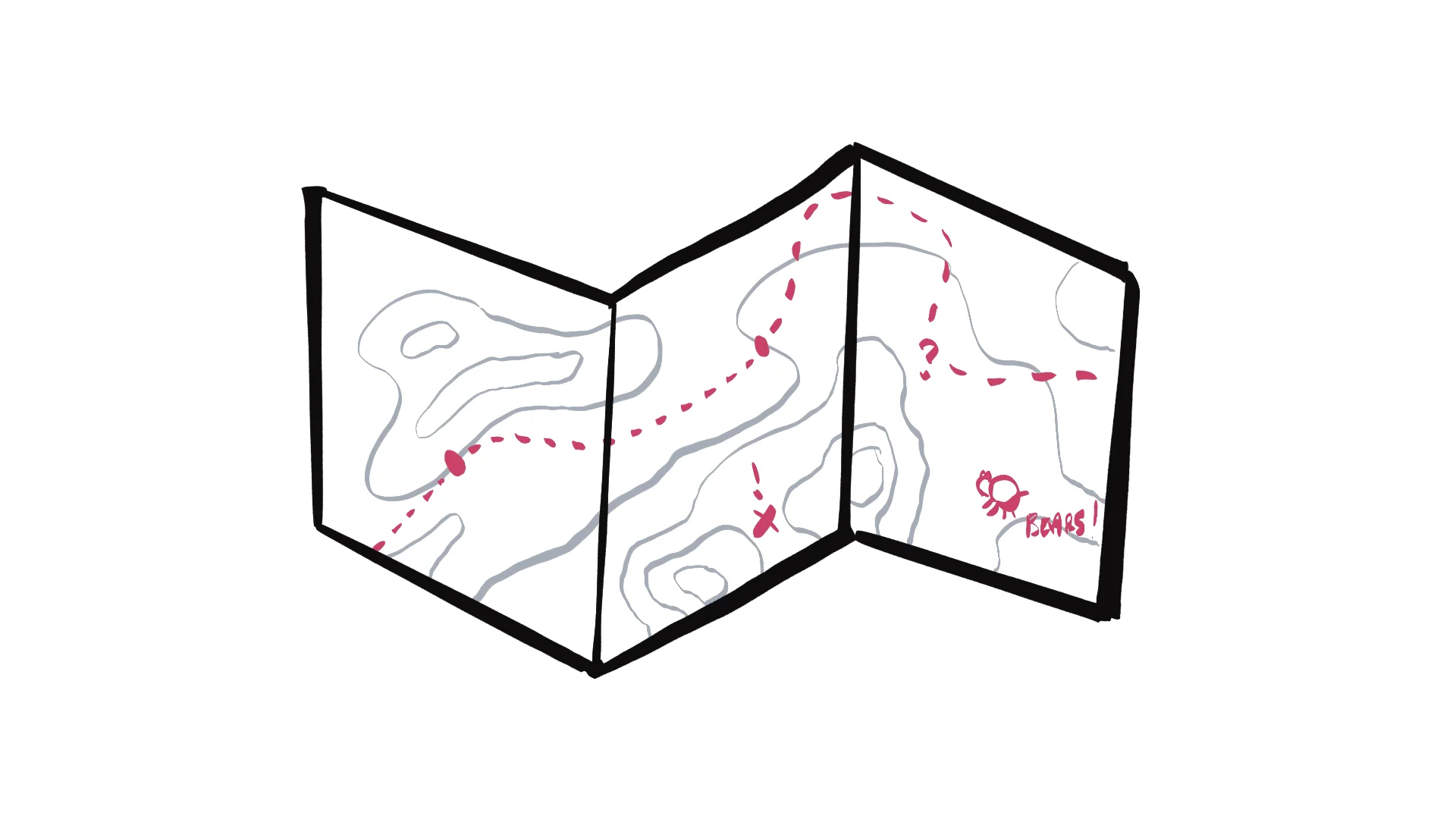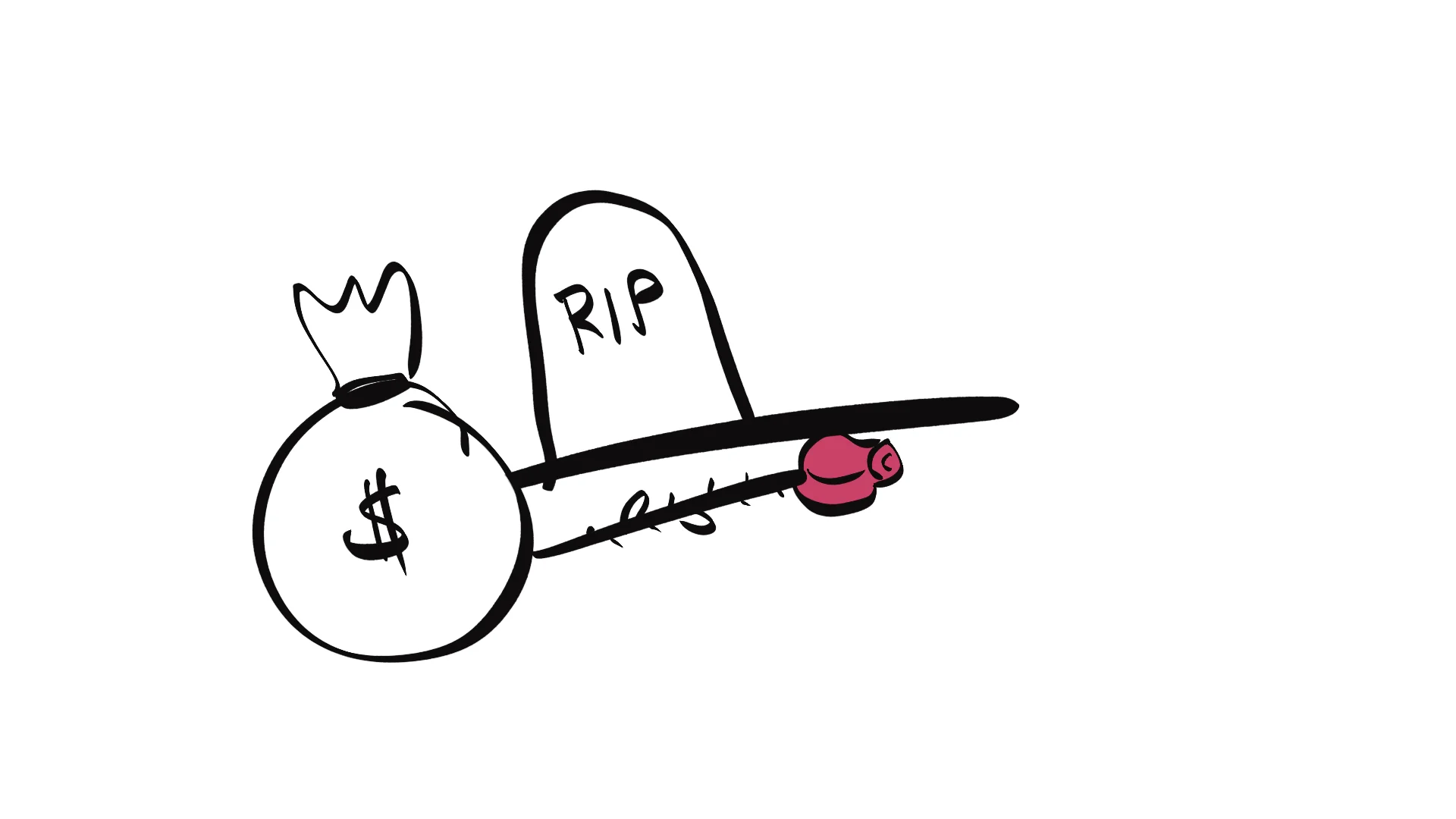- Published on
Standing on the shoulders of giants
- Authors

- Name
- Nick Gralewicz
My introduction to roleplaying games was D&D 5th edition about a decade ago. This puts me in a camp with about 99% of all tabletop RPGers in the world today (don’t check my math, please).
But 5e was just the beginning. After my curiosity implored me to pull back the curtain, I found the secret that D&D tried to hide for so long: that there are other TTRPGs! And they are really freaking good! 🤯
So let’s talk about some of the other games that I’ve enjoyed, and how they directly influenced the design of HOME.

Maps from THE QUIET YEAR
When I would go on long roadtrips as a kid, I would grab the map from the glovebox and look at the pen marks from previous trips. What did that line mean? Why is there an X here? Let’s go to the X right now!
It’s a story without words: the symbols, colours, scratches and stains, they are the journey immortalised on paper. The style and stroke can tell you what was important, who drew it, how they were feeling at the time.
I love games that create artefacts (and especially maps) because your creation is more than just a memory. Sure, you’ll probably toss it in a drawer and forget about it for six years, but that moment you find it again? When you remember all the Xs and lines and names from your story? That’s special, maybe enough to be saved from the trash for another six years.
The Quiet Year is a great example of this. It’s a mapping game about a community after a collapse but before their ambiguous end. It’s a quiet year of creation and destruction, and the map you create represents this struggle.
The map is the most obvious influence on HOME, but I wouldn’t be surprised if The Quiet Year subtly influenced much more of my design. Avery Alder deserves high praise for emulating how communities work together, how communication can be constrained, how contempt can grow. As a game designer, I really appreciate the simple elegance she created.

Envision from STARFORGED
All TTRPGs demand some level of creative output from the players. I would argue this is the core tenet of the hobby and what sets a TTRPG apart from a board game: you aren’t just driving a racecar around a board, trading sheep and bricks, trying to build the longest train across Europe. You are imagining what it’s like driving a racecar past Boardwalk, acting out the tense negotiations between the shepherd and brickmaker, describing the week-long journey from caboose to engine of your impossibly long train.
Like many great Powered by the Apocalypse descendants, the dice in Starforged drive the story forward in directions you may not expect. But Starforged wraps the dice roll in a simple yet powerful instruction: “envision the fiction.”
At first glance, this seems vague and nebulous. Maybe even daunting. And what does “envision” actually mean?
Shawn Tomkins, creator of Starforged, asks you to:
take a moment and put the focus on the fiction by imagining, describing, or discussing what is happening.
I love it. It works for both solo and group play (imagine vs. describe), it encompasses all levels of roleplay (one sentence, vs. an entire scene), and it becomes a one-word reminder that you are in charge of the story and experience you want.
The fingerprints of Starforged are all over HOME (oracles, progress tracks, game-specific support and safety tools), but the most obvious influence is the word “envision.”

Endings from FIASCO
Like many, Fiasco was the first game that helped me see the TTRPG world differently. You don’t need a GM? We can just sit down and improv a story without any prep? I want my character to make bad decisions?
Fiasco is a game about “powerful ambition and poor impulse control”. Jason Morningstar designed it to create a story that feels like a Cohen brothers movie, and it rarely misses. It’s a very different style of play than D&D, but (at least for me) so much more rewarding because of the collaborative storytelling.
HOME is influenced by Fiasco in a lot of ways: oracle-like tables for quick setup, 2 different color dice that visually represent good and bad outcomes, a game flow that emulates well known story structure.
But the most important thing that Fiasco (and Jason directly) influenced was that the game needs to have a clear ending, ideally accomplishable within one normal session of play. Asking people to play a one-shot is a lot easier than asking them to commit to 5 weeks of play, and if they did want to play more, would they if the first session wasn’t satisfying?
HOME was designed with this in mind: make it end, make it satisfying, make it fit within time constraints that make it easy for people to play.
Uh, is that another curtain?
But wait, what is this? Another curtain? What, pray tell, could lie behind such a thing…
An experienced reader may recognize the three above examples as “popular” in the TTRPG community. Certainly not as popular as D&D, but definitely the second group of cool kids at highschool (and probably cooler because of it).
There is a whole ocean of indie TTRPGs out there that I still need to explore. I’m still early in my TTRPG design journey, I crave more examples that push the boundary of play. New types of stories, mechanics, and experiences. New shoulders to stand upon.
So what do I need to play? What games and designs made you see the TTRPG world differently?
Please let me know, and let's see where the new inspiration takes us.
HOME is coming to Kickstarter in February! Follow the project on Kickstarter or sign up to our the Deep Dark Newsletter to be notified when it releases!